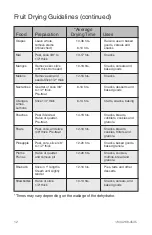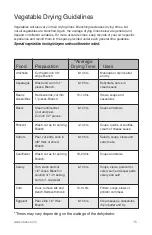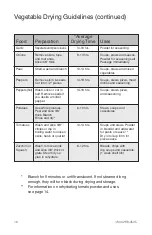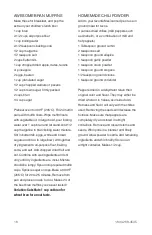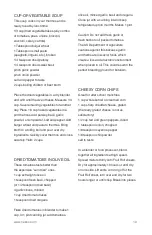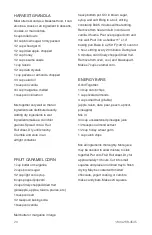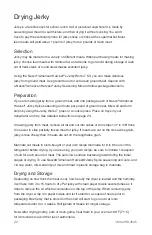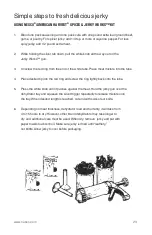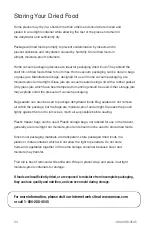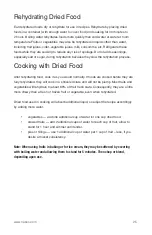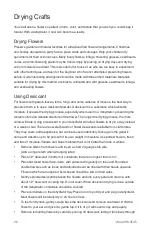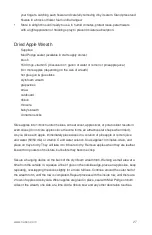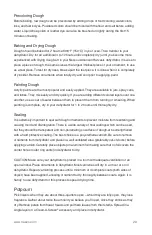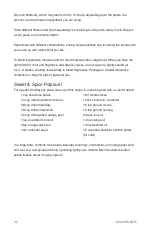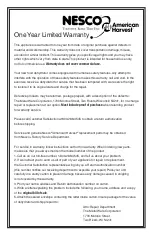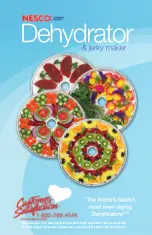
Storing Your Dried Food
Some pieces may dry in a shorter time than others and should be removed and
placed in an airtight container while allowing the rest of the pieces to remain in
the dehydrator until sufficiently dry.
Package all dried foods promptly to prevent contamination by insects and to
prevent stickiness and rehydration caused by humidity. Store dried foods in
airtight, moisture-proof containers.
Home vacuum packaging devices are ideal for packaging dried foods. They extend the
shelf life of dried foods three to four times. Home vacuum packaging can be done in bags
or glass jars. Manufacturers’ bags, designed for use in home vacuum packaging, are
moisture-proof and airtight. Glass jars are vacuum sealed using a lid with a rubber gasket.
Only glass jars which have been tempered for canning should be used. Other storage jars
may explode under the pressure of vacuum packaging.
Bag sealers can also be used to package dehydrated foods. Bag sealers do not remove
air within the package, but the bags are moisture-proof and airtight. Squeeze the pouch
tightly against the food to remove as much air as possible before sealing.
Plastic freezer bags can be used. Plastic storage bags, not labeled for use in the freezer,
generally are not airtight nor moisture-proof and should not be used to store dried foods.
Since most packaging materials are transparent, store packaged dried foods in a
plastic or metal container which will not allow the light to penetrate. Do not store
fruits and vegetables together in the same storage container because flavor and
moisture may transfer.
Fruit roll is best if removed while still warm. Wrap in plastic wrap and place in airtight
moisture-proof containers for storage.
If foods are insufficiently dried, or are exposed to moisture from incomplete packaging,
they can lose quality and nutrition, and can even mold during storage.
For more information, please visit our internet web site at www.nesco.com
or call 1-800-288-4545
24
1-800-288-4545
Summary of Contents for WA17577H
Page 1: ......



